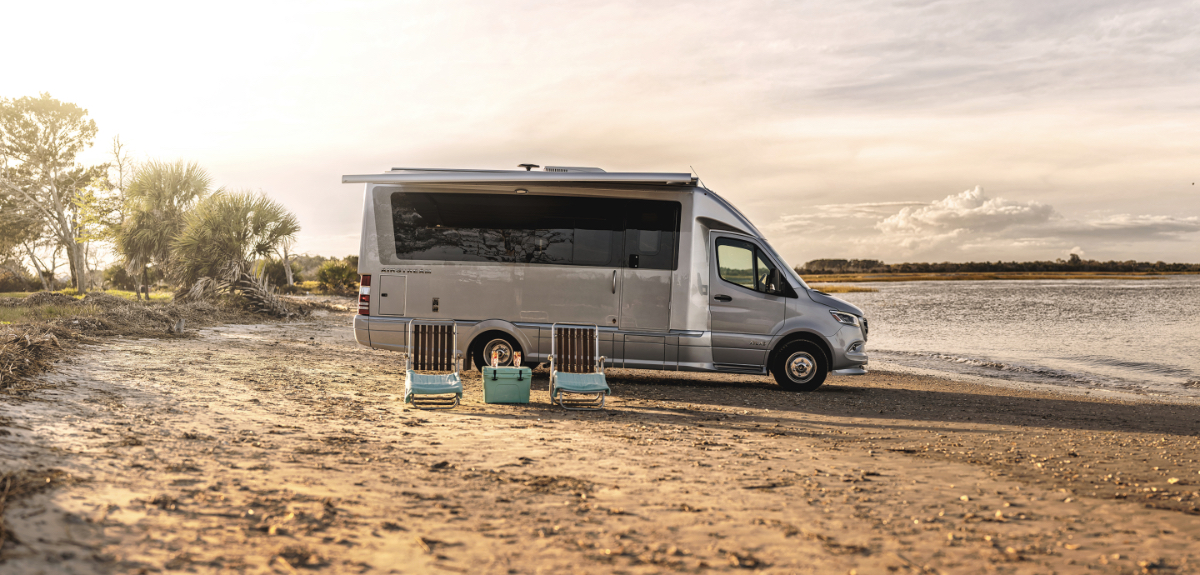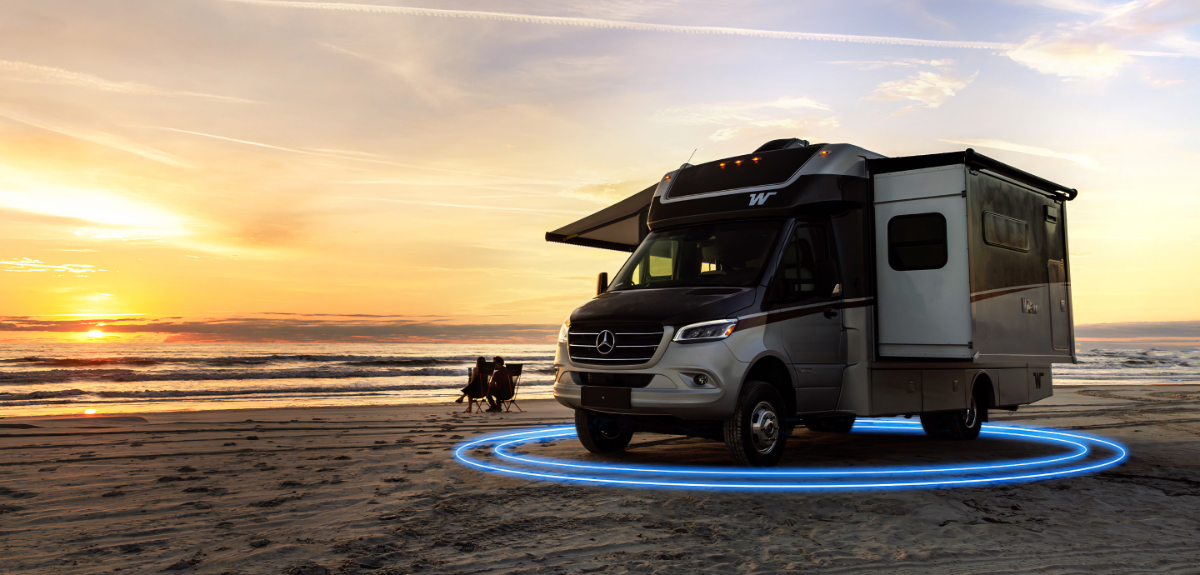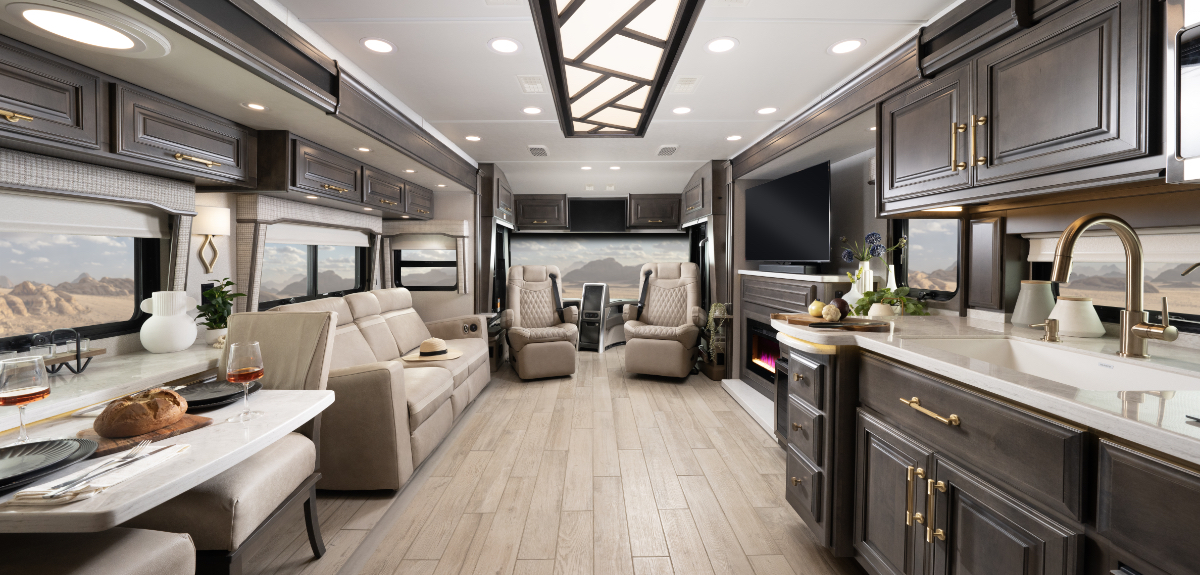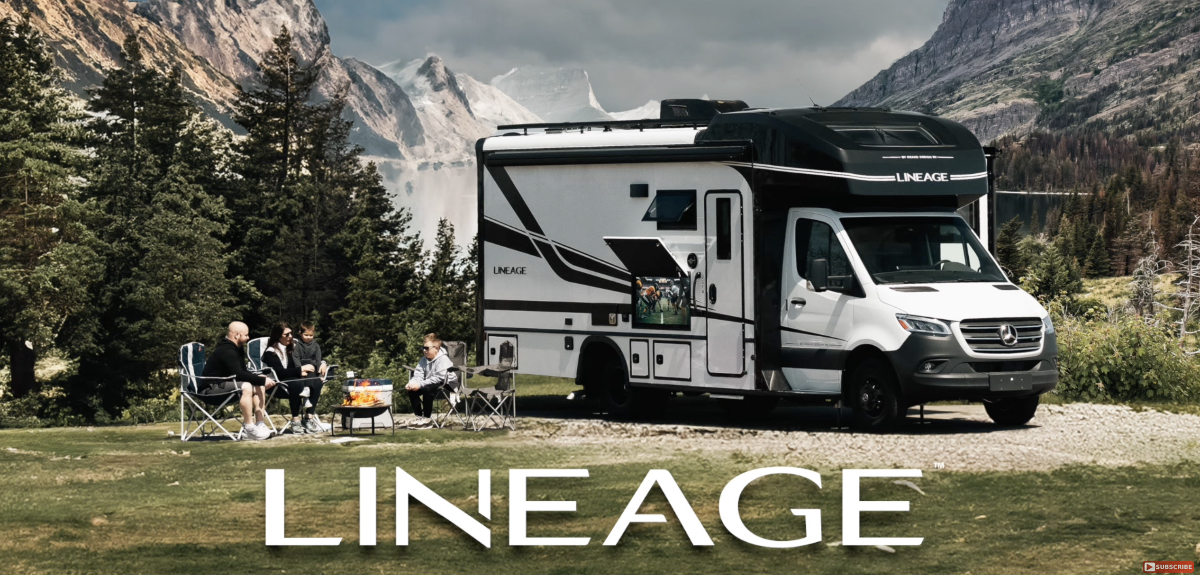Everything We Know About the Winnebago e-RV So Far
Electric RV is a Concept Vehicle that Offers a Glimpse of the Future
Image Caption: Image Courtesy of Winnebago
Earlier this week, Winnebago shared more information about its all-electric motorhome—the e-RV. At the Florida RV SuperShow in Tampa, the company lifted the veil of secrecy surrounding the vehicle, which promises to be a high-tech motorhome for the masses. Several important questions about this intriguing new camper were answered at the event, although some significant ones still remain.
Here’s what we know about the Winnebago e-RV so far.
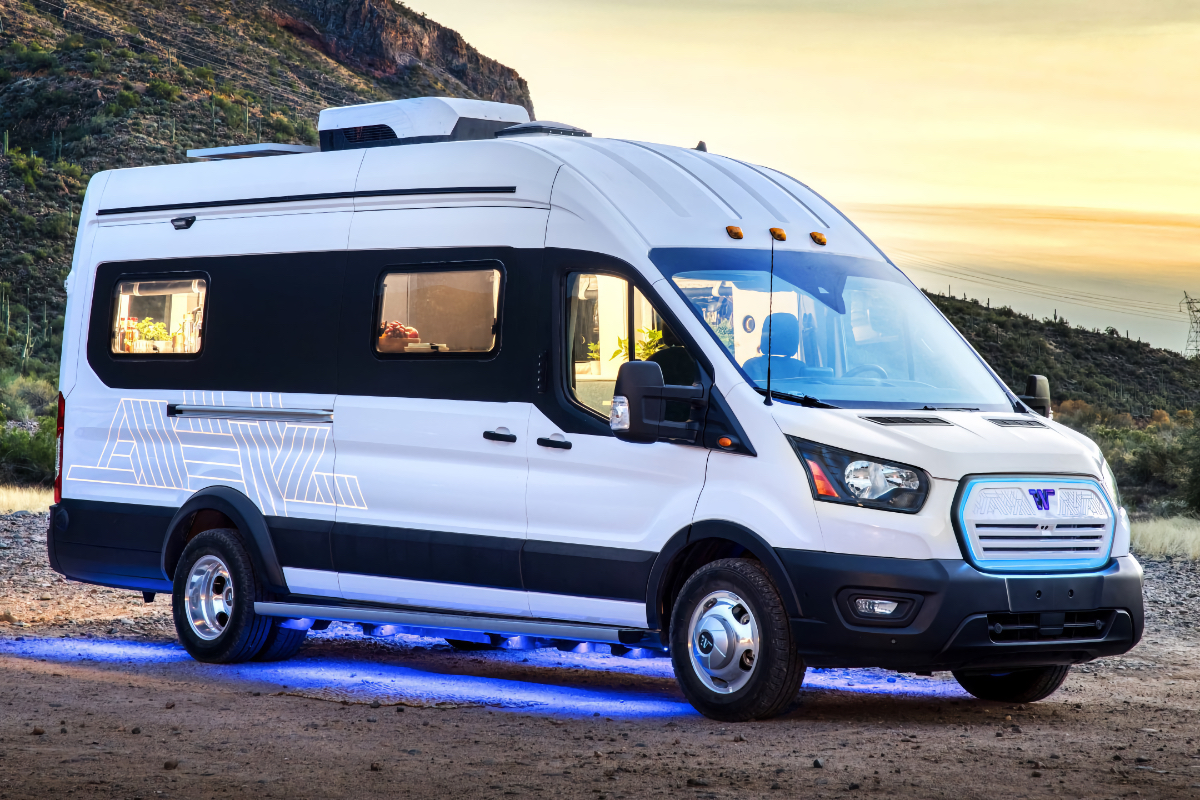
Image Courtesy of Winnebago
Electrified Ford Transit Van
The e-RV uses the Ford Transit Van platform, which delivers proven reliability and performance. The chassis is a popular one in the RV industry and is found on a number of Class B camper vans. Winnebago adapted the platform for an electric drive system, which has its own unique needs and requirements.
A company called Lightning eMotors is supplying the powertrain for the e-RV. Currently, the system uses an 86 kilowatt-hour (kWh) battery, which will power the vehicle’s motors, control systems, and living space. For comparison, the Tesla Model S Plaid and Model X use a 95 kWh battery pack.
The battery and electric drive give the e-RV a range of about 125 miles while with plenty of charge left over to power its onboard systems. Winnebago indicates that it feels this is an adequate distance, as research data shows that 54% of new RV owners prefer to take camping trips of 200 miles or less. The vehicle will reportedly recharge in about 45 minutes, although it is unclear what type of charger is needed to achieve that speed.
The company hasn’t provided estimated horsepower or torque numbers for the electric drivetrain yet.
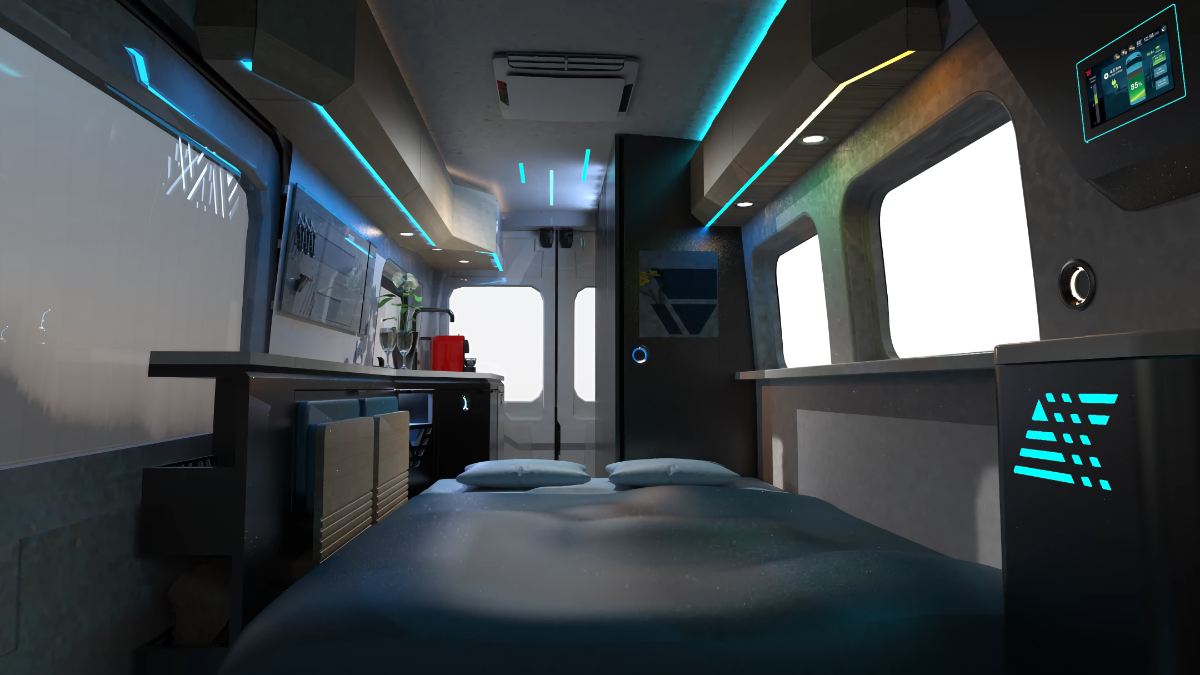
Image Courtesy of Winnebago
Battery-Operated Appliances
Winnebago’s electric RV comes well equipped for life on the road. The camper van features an onboard water heater and a roof-mounted air conditioner with a heat pump that runs off 350-volt DC power provided by the batteries. A slide-out induction cooktop and marine-grade refrigerator draw power from either 110-volt AC or 12-volt DC.
Other standard amenities include a sink in the kitchenette and a bathroom equipped with a toilet and a detachable showerhead. The dining area offers seating for four and a stowable table. That same space converts into a bed when it comes time to turn in at night.
In keeping with the eco-friendly vibe of electric vehicles, some of the materials used in creating the e-RV’s interior come from sustainable sources. These include recycled cork flooring and a wool lining on the walls that provide additional insulation. The van also uses some wood accents in its construction.
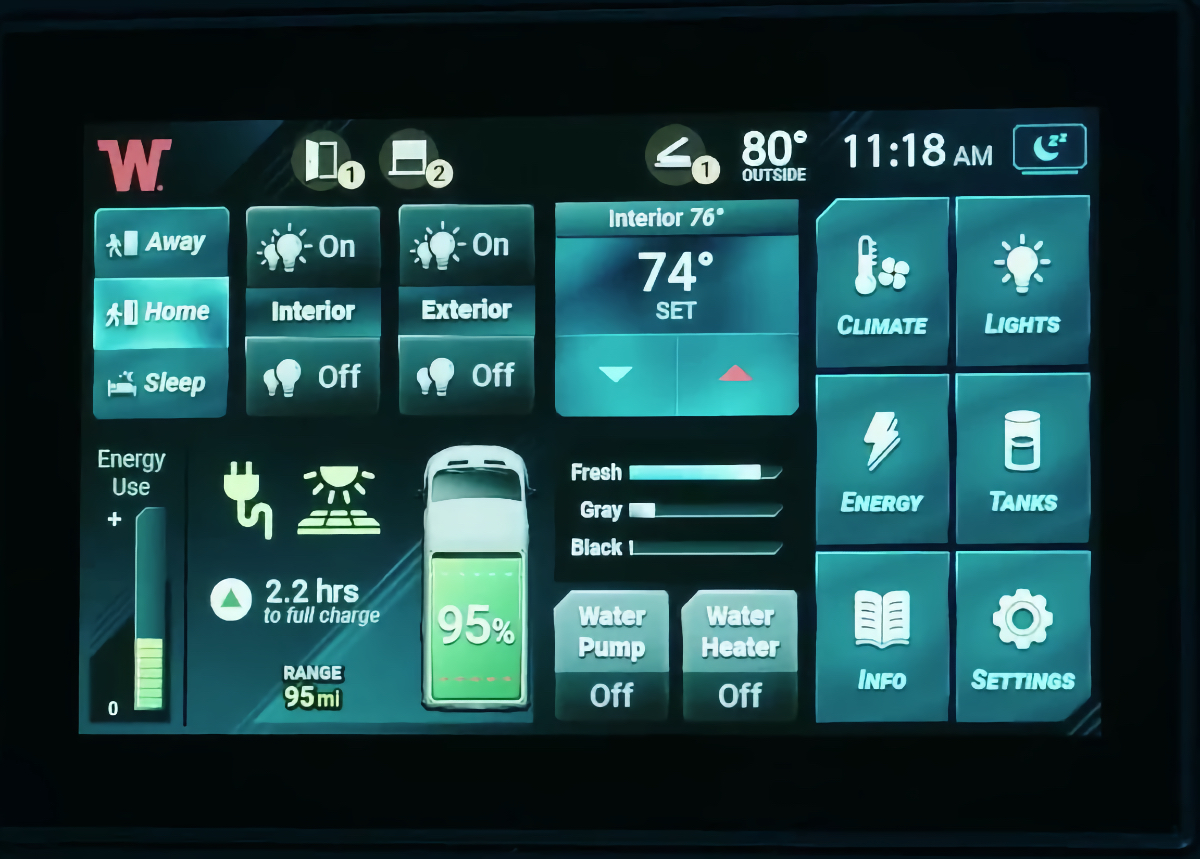
Image Courtesy of Winnebago
High-Tech Features
As if driving an electric vehicle wasn’t already high-tech enough, Winnebago has integrated other technology into the e-RV to help it stand out. For instance, the company says that the van will include dual Wi-Fi routers to create a “residential grade” wireless network. These modems will enable high-speed data streaming, which should prove helpful for remote workers or anyone looking to catch up on their favorite Netflix show while at the campsite.
The motorhome also includes an integrated touchscreen control system for monitoring battery life, climate settings, and fresh-, gray-, and black-water tank levels. The system allows users to control interior and exterior lighting and activate the water pump and heater when needed. Those same controls and settings can be accessed via a smartphone or tablet.

Image Courtesy of Winnebago
Price and Release Date
Winnebago’s Advanced Technology Group (ATG)—the internal task force that designed the e-RV—spent more than two years building the prototype revealed at the Florida RV SuperShow. The team is quick to point out that the electric camper van is just a concept, at least for now.
During the unveiling, company officials spoke about the vehicle as if it were a future product—the question is, when will it ship, and how much will it cost? At the moment, Winnebago isn’t ready to talk numbers or dates, so those questions remain unanswered.
The ATG has indicated that EV technology is evolving rapidly, and the e-RV’s current specs could change before it becomes a tangible product. Battery life and the efficiency of the electric motors could improve dramatically between now and when the van starts shipping to customers. That could lead to improved range and better all-around performance.
As with most electric vehicles currently in the pre-production stage, potential buyers will need to be patient. It seems likely that this model is still a few years away at best. Still, it’s good to know that a major RV manufacturer like Winnebago is getting into the electrification game. That bodes well for the quiet, eco-friendly RVs of the future.

